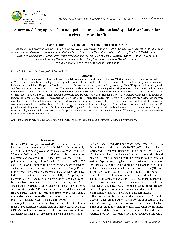摘要
The goal of this research was to put forward a new spatial distribution approach to non-point source (NPS) pollutants in river network of delta area in China, which normally has developed economy and serious problem of water pollution, characterized by special stream system structure and hydrodynamic conditions. The proposed method is raised on the foundation of study area gridding, assuming all the NPS pollution from a single grid cell flows into its closest sub-reach of a river. The practice can determine the corresponding relationship between pollution yield cells and their receiving sub-reaches. We conducted this study by taking the Zhuhugang river system in Jiangsu Province of China as the object. On the basis of land use grid model and the export coefficient modeling approach, the NPS pollution load distribution model was established according to the method put forward. Then, the total nitrogen (TN hereafter) and total phosphorus (TP hereafter) loads of several main rivers were obtained and the land use types contributing most to the pollution were analyzed. Furthermore, the model was coupled with the river network water quality model to forecast the concentration variation caused by TN and TP load at the typical sections in different water periods. The results of this research indicate that the NPS pollution made the greatest impact on the the upstream of Zhigugang River in low water period and the impacts on the sections weakened along the river basically; while in high water period, the NPS pollution made the smallest impact on the upstream of Zhigugang and in general the effects gradually strengthened along the river.
- 出版日期2013
- 单位河海大学
